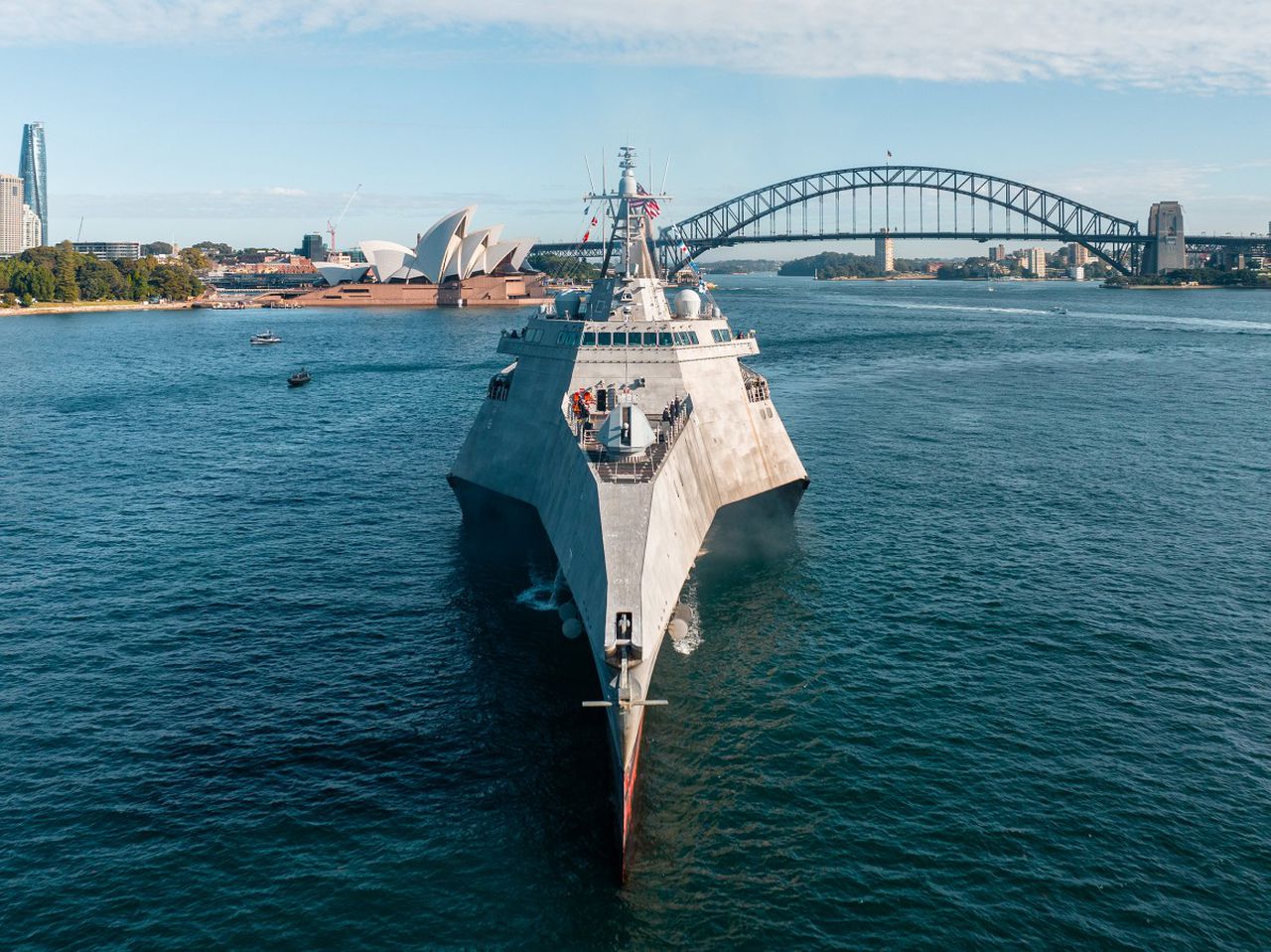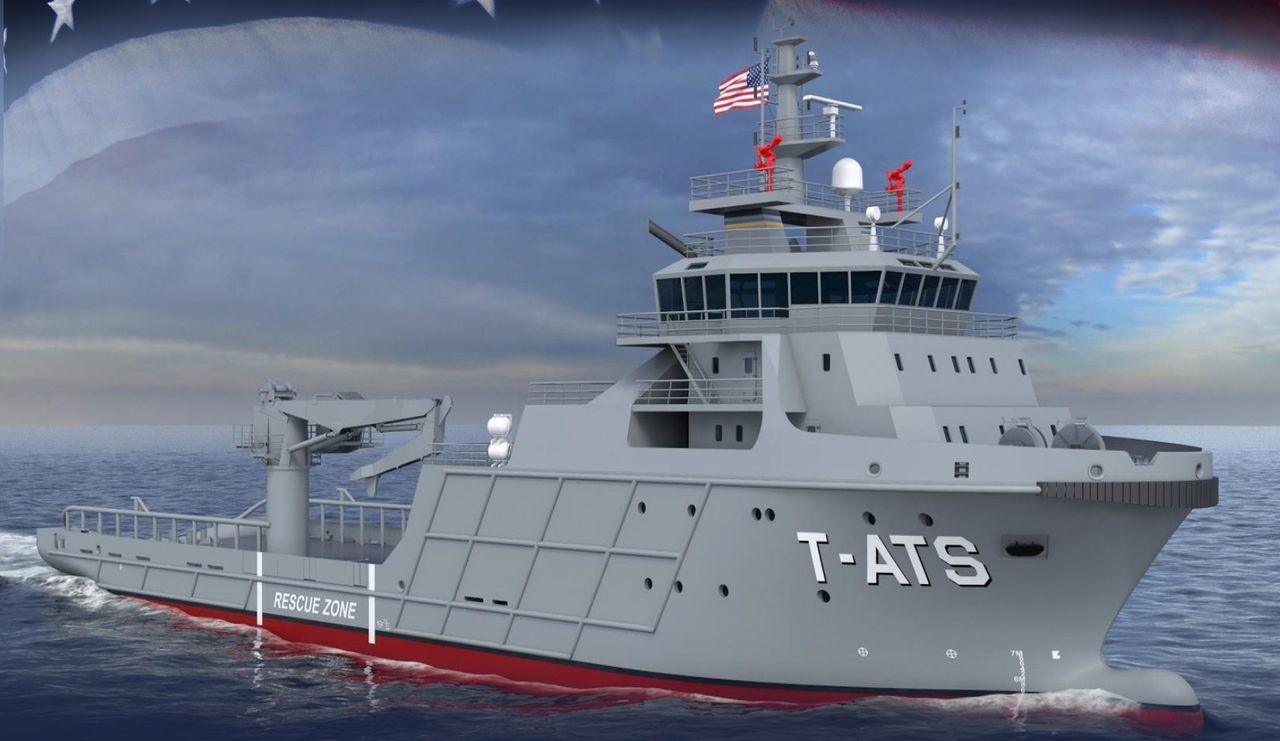Austal USA taking a beating on first steel ships, parent company says
The Navy contract celebrated by Austal USA as its entry into steel shipbuilding has turned into a money-losing proposition, with the Mobile-based shipbuilder’s parent company referring to it as “onerous.”
Issues surround the T-ATS, a U.S. Navy ship being built in Mobile that combines the capabilities of an oceangoing tug with those of a rescue and salvage ship.
Difficulties with the T-ATS program came to light this week in Australia, home to Austal Limited. Initially Austal Ltd. asked for its securities to be placed in a trading halt on the Australian Stock Exchange, pending an unspecified announcement. On Tuesday, that announcement came in the form of an earnings forecast update with a “substantantial revision in earnings guidance” for Fiscal Year 2023.
The revision erased projected earnings for 58 million Australian dollars [$39.7 million U.S. dollars]. Instead, the company foresees “an expected range between zero profit to a potential loss of AU$10million.” “This is clearly a disappointing financial result for Austal given the success that we have had recently winning new projects to expand our US operations,” said Austal Ltd. CEO Paddy Gregg.
Mobile-based Austal USA, which previously constructed aluminum ships, began transitioning into steel work during the COVID-19 pandemic. As Gregg’s comment indicates, it has won a substantial variety of work for its new steel line, including Navajo-class T-ATS ships, a drydock and Offshore Patrol Cutters for the U.S. Coast Guard.
Austal Ltd. said that several factors had impacted the T-ATS program, starting with “general cost inflation pressures.”
“The underlying issue is that the T-ATS award was received just prior to a period of unprecedented hyperinflation,” said Gregg. “(S)ome inaccurate assumptions were made regarding the efficiency of the new steel panel line in its first project, and the project has also been subject to specification changes from the original award.”
The Austal earnings forecast update said that in this case, the Navy’s decision to add a fifth ship to the deal wasn’t a positive. “The exercise of the option to construct the fifth and final vessel in the contract has also added in the associated cost issues to the onerous contract,” it said.
The T-ATS is a U.S. Navy ship that combines the capabilities of an oceangoing tug with those of a rescue and salvage ship. According to a recent report from Austal Limited, the parent company of Austal USA, problems with the T-ATS contract wave wiped out tens of millions in projected profit. U.S. Navy/Austal USA
However, the Austal update also held out the possibility that it could recoup some if its losses. The company is submitting “Requests for Equitable Adjustment” (REAs) seeking to recover some of its costs. Whether those will bear fruit and when is uncertain, so the company expects them to affect results in the next fiscal year rather than to undo damage in this one.
Gregg also said that more recent contracts include Economic Price Adjustment clauses “that provide important cost escalation and variation protection.”
“We will continue to proactively apply the lessons we’ve learn so far to enhance operational efficiencies as the T-ATS project progresses, and we are optimistic the REAs will mitigate some of the provisioned losses on the project,” Gregg said.
“It is clear that we need to make changes to some reporting structures and processes so that Austal USA can identify and rectify these sorts of issues in a more timely manner,” he said.
Austal’s statement said that despite the losses, the company has “a healthy cash at bank position.”
The T-ATS, a ship designed for towing, rescue and salvage operations, also has been problematic for another shipyard. Per the U.S. Naval Institute News: “Austal USA was selected as the second Navajo yard after the first builder Gulf Island Shipyard in Houma, La., ran into cost and schedule delays for the first four ships. The Gulf Island yard was bought by Bollinger Shipyard in 2021. Bollinger assumed construction for the first four of the hulls. The first hull, Navajo (T-ATS-6), was launched in May.”

LCS-30, an Independence-class Littoral Combat Ship built in Mobile by Austal USA, is shown after its arrival in Sydney, Australia. The U.S. Navy held a commissioning ceremony on July 22, at which the ship officially entered service as the USS Canberra.Austal Ltd.
Forbes.com noted that the news dampened what should have been a triumphant week for Austal Limited: On July 22, the U.S. Navy held a commissioning ceremony in Sydney for the LCS-30. At that ceremony, the Alabama-built Littoral Combat Ship entered service as the USS Canberra. The timing of the bad news “was not a good look,” for Austal, said Forbes.com, and could complicate “its transition from a prickly Western Australian boat-builder to a globe-spanning contributor to maritime security.”
Like the Naval Institute News, the Forbes.com report said the T-ATS program had a troubled history. Senior Contributor Craig Hooper wrote that “For Austal, the T-ATS was a lifesaver, fitting in just when the legacy Independence-variant Littoral Combat Ship and Spearhead-class Expeditionary Fast Transport production lines started to wind down. Austal, for its part, was desperate for contracts … observers worried that the yard might have underbid in desperation. In the end, Austal got a $385 million fixed-price incentive contract to build up to five T-ATS ships.”
“To industry observers, it was clear from the start that the T-ATS was set to be a loss-leader for Austal,” wrote Hooper. “As early as mid-2022, anything up to $50 million in losses could, essentially, have been portrayed by Austal as a prompt and responsible ‘repayment’ of the government’s $50 million grant to help convert the yard to steel manufacturing.”
As for the REAs, Hooper wrote that “resolution is a contentious process and often not something that gets resolved in either an efficient or direct fashion.”
Hooper said that while losses could increase, it’s also possible that Austal USA will get past its teething problems on the T-ATS line, and that “the company could be setting the stage to outperform later in the production run.”
A representative of Austal USA said the company was not able to make any statement beyond what Austal Ltd. had released.
Related:
Austal USA braces for boom: 2,000 new jobs, new facilities to come
Austal USA lays keel for last Littoral Combat Ship, the vessel ‘that made the company’
U.S. Navy gives Austal USA its first contract for steel ships
